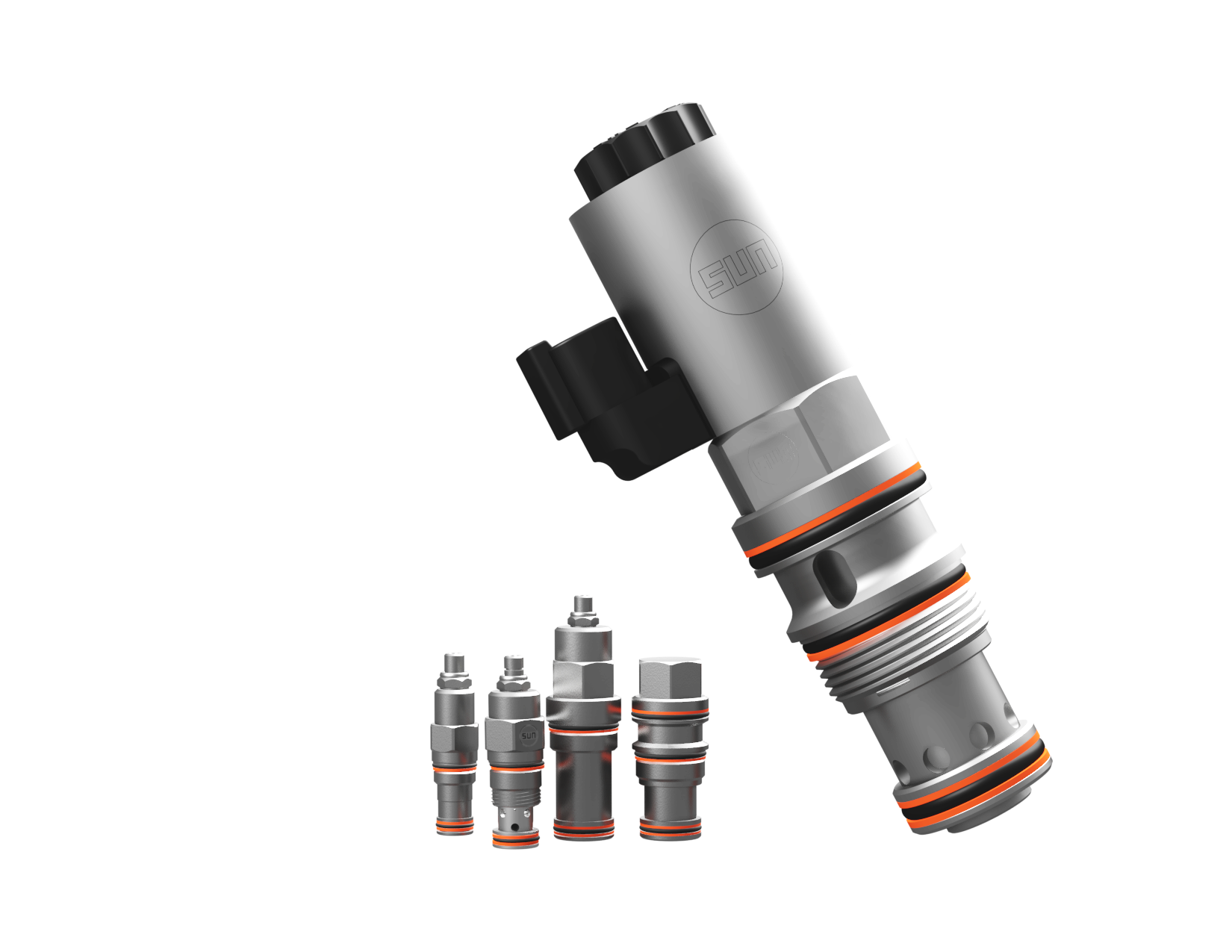
2 ports, fully adjustable, needle valve, with reverse flow check

Needle and check valve is the most common type of flow control valve. It combines two functions in a single component—a check valve with a throttling function. The valve allows free flow in one direction, while restricting flow in the opposite direction. In the flow direction where the check valve is open, oil passes freely through the valve without resistance. In the opposite direction, however, the check valve closes, and the oil is forced to pass through a restriction (either adjustable or fixed), which limits the flow rate.

2 ports, fully adjustable, needle valve, with reverse flow check

2 ports, fixed orifice, non-compensated, with reverse flow check

2 ports, fixed orifice, pressure compensated, with reverse flow check

2 ports, fully adjustable, pressure compensated, with reverse flow check
Needle and check valves are used in a wide range of hydraulic applications and are particularly common in systems with hydraulic cylinders. To control the flow—and thereby the speed—in both directions of the cylinder’s movement, it is common to use two throttle check valves per cylinder, one for each flow direction. This allows the flow to be regulated independently for both extension and retraction, providing highly precise and flexible control over movement.
By combining the check valve function, which allows free flow in one direction, with the throttling function, which restricts flow in the opposite direction, an operator can, for example, allow a cylinder to move quickly in one direction while maintaining a slow and controlled movement in the other. By using two needle and check valves—one for each direction—the flow can be individually adjusted in both directions. This enables precise speed control regardless of movement direction, which is especially valuable in applications where precision, safety, and smooth motion are critical, such as in lifting systems, presses, and excavators.
Needle and check valves are fully adjustable, meaning the throttling function can be continuously set from fully open to fully closed, depending on the desired flow restriction. This allows precise adjustment of the speed of a hydraulic movement to match varying loads, operating conditions, or machine requirements.
The valves can be installed to provide throttling in the desired flow direction—either as inlet throttling (meter-in) or outlet throttling (meter-out). Inlet throttling is used when controlling how quickly oil is delivered to a function, while outlet throttling limits how quickly oil exits a function. This flexibility makes the throttle check valve highly versatile and suitable for applications where different movement speeds are required in different directions, or where load variations affect movement dynamics. Thanks to its adjustable design, the valve can be optimized for performance, safety, and energy efficiency in both mobile and industrial hydraulic systems.



Hydnet
EA Rosengrens gata 29
421 32 Västra Frölunda
+46 31 - 499 490
info@hydnet.se